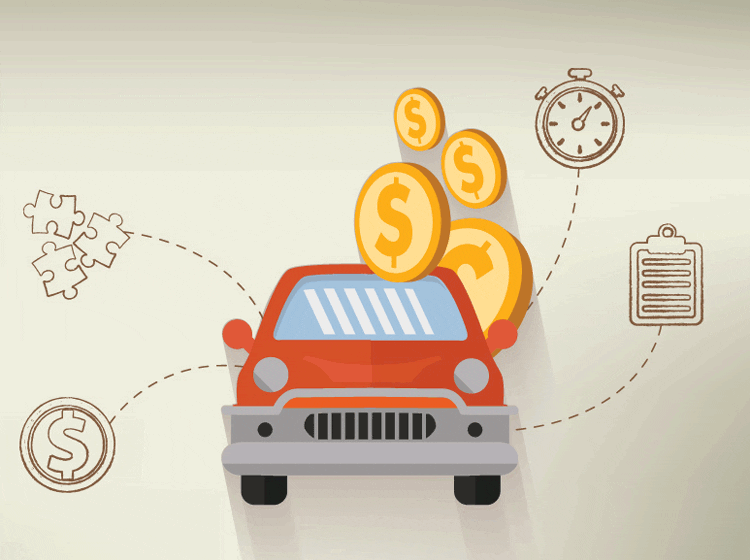Key Components of an Auto Loan
Understanding these core terms is crucial before you start shopping for a loan:
Principal: This is the total amount of money you borrow to purchase the car. It’s the purchase price of the vehicle minus any down payment or trade-in value.
Interest Rate: The cost of borrowing the principal, expressed as a percentage. A lower interest rate means lower monthly payments and less money paid over the life of the loan. This is often referred to as the Annual Percentage Rate (APR), which includes the interest rate plus any additional fees.
Loan Term: The length of time you have to repay the loan, typically measured in months (e.g., 36, 48, 60, or 72 months). A longer term means lower monthly payments but results in paying more interest over time. A shorter term has higher monthly payments but saves you money on interest.
Down Payment: The upfront, out-of-pocket cash you pay toward the purchase of the vehicle. A larger down payment reduces the principal amount you need to borrow, which can lead to a lower interest rate and lower monthly payments.
Collateral: The car itself serves as the collateral for the loan. If you fail to make your payments, the lender has the right to repossess the vehicle to recover their losses.

Types of Auto Loans
Auto loans aren’t one-size-fits-all. The type you choose depends on where you get the loan and your credit situation.
Direct Loans: These are loans you get directly from a financial institution, such as a bank, credit union, or online lender. You are approved for a specific amount before you go to the dealership, which gives you a strong position to negotiate the car price.
Dealership Financing: The dealership acts as a middleman, arranging the loan for you through a variety of lenders, including the manufacturer’s financing arm. This can be convenient, but it’s important to compare their offer with a direct loan to ensure you’re getting the best rate.
New vs. Used Car Loans: New car loans often have lower interest rates and longer terms due to the car’s higher value and perceived lower risk. Used car loans may have higher rates and shorter terms.
Bad Credit Loans: For borrowers with low credit scores, these loans come with significantly higher interest rates to offset the increased risk for the lender. While they can get you a car, they are much more expensive in the long run.
The Auto Loan Process: Step-by-Step
Following a structured process can save you time, money, and stress.
1. Check Your Credit Score
Your credit score is the single most important factor in determining your interest rate. Check your score with one of the three major credit bureaus (Equifax, Experian, TransUnion) before you start shopping. A score above 720 is generally considered excellent and will get you the best rates.
2. Determine Your Budget
How much can you afford? Don’t just think about the monthly payment. Factor in insurance, gas, maintenance, and registration fees. A good rule of thumb is that your car expenses, including the loan payment, should not exceed 15-20% of your take-home pay.
Save for a Down Payment: Aim for a down payment of at least 10% for a used car and 20% for a new one. This will lower your monthly payments and help you avoid being “upside down” on your loan (owing more than the car is worth).
3. Get Pre-approved for a Loan
This is a crucial step. By getting a pre-approval from a bank or credit union, you know exactly how much you can borrow and at what interest rate before you even set foot in a dealership. This turns you into a “cash buyer” and gives you leverage in negotiations.
4. Find the Right Vehicle
With your budget and pre-approval in hand, you can confidently shop for a car that fits your needs. Research different models, read reviews, and take test drives.
5. Negotiate and Finalize the Purchase
Negotiate the Price: Use your pre-approval to negotiate the vehicle price. Don’t mention your financing until you’ve agreed on the final sale price.Review Dealer Financing: If the dealership offers financing, you can use your pre-approved loan as a bargaining chip. The dealer may be able to beat your pre-approved rate, but if not, you have a solid backup.
Read the Contract: Before you sign anything, carefully read the entire loan agreement. Ensure the interest rate, loan term, and total amount are what you agreed to. Look for any hidden fees or add-ons.
Tips for a Smart Auto Loan
Shop Around: Compare interest rates and terms from multiple lenders (banks, credit unions, online lenders) to find the best deal.
Keep the Term Short: Opt for the shortest loan term you can comfortably afford. While a 72-month loan has lower payments, a 36- or 48-month loan will save you thousands in interest.
Avoid Rolling Over Debt: Be wary of loans that allow you to roll over negative equity from your previous car. This will put you underwater on your new loan from day one.
Consider Refinancing: If your credit score improves after a year or two, you may be able to refinance your auto loan to a lower interest rate, saving you money over the remaining term.
Read the Fine Print: Pay close attention to prepayment penalties, late fees, and any optional add-ons the dealer may try to include (like extended warranties).

Conclusion
An auto loan is a powerful financial tool that can help you get on the road quickly and responsibly. By understanding the key components, getting pre-approved, and negotiating with a clear strategy, you can secure the best possible terms. Remember, a car is a depreciating asset, so the goal is to get the best vehicle for your needs while minimizing the overall cost of ownership. With careful planning, you can drive away in the car of your dreams with a loan that fits your budget and your financial goals.
